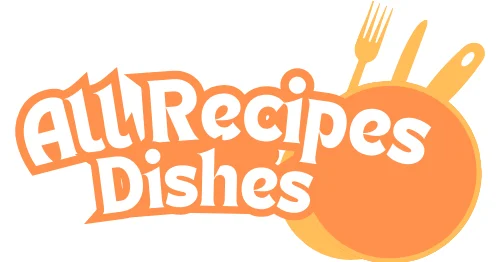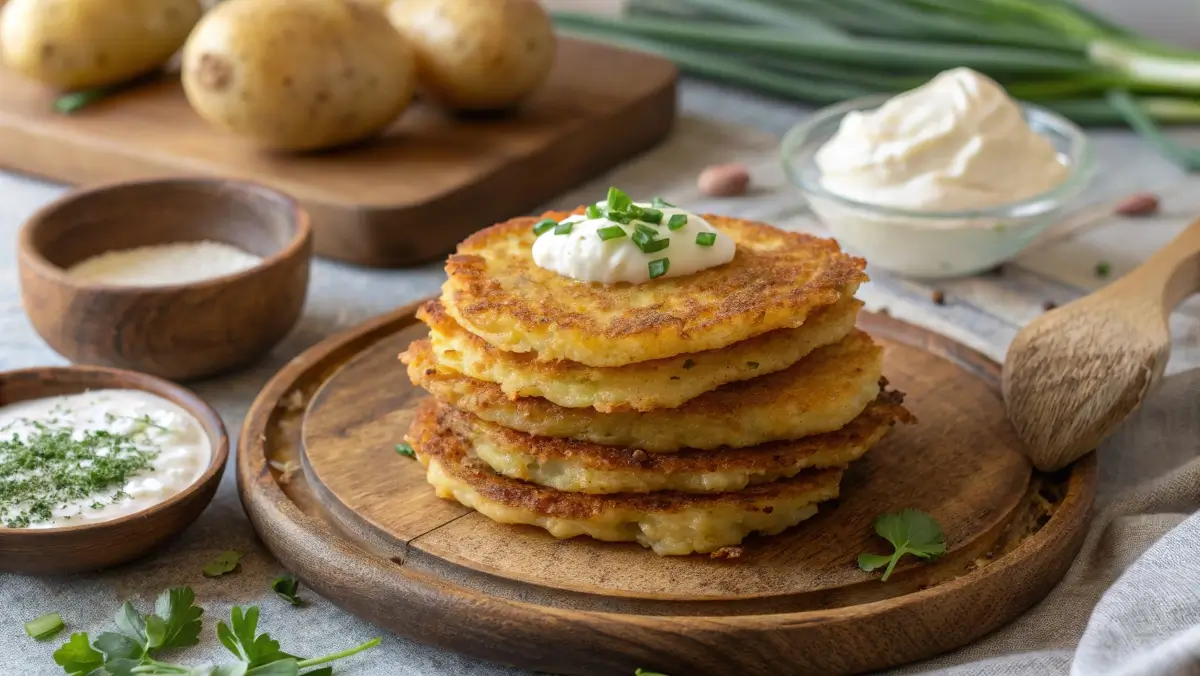Potato Pancake Mix – The Ultimate Guide to Crispy, Golden Perfection
Potato pancakes are a comfort food classic — crispy on the outside, tender on the inside, and endlessly versatile. Whether you call them latkes, kartoffelpuffer, or simply potato fritters, they’re a delicious way to turn humble potatoes into a crowd-pleasing dish. This guide will walk you through everything you need to know about potato pancake mix, from making it at home to tweaking store-bought blends for maximum flavor and crunch. We’ll cover cooking tips, ingredient swaps, cultural variations, and storage secrets so your pancakes stay crispy long after they leave the pan.
Looking for inspiration? Try parmesan smashed potatoes for another crispy potato delight that pairs beautifully with any main course.
Table of Contents
Introduction to Potato Pancake Mix
What is Potato Pancake Mix?
Potato pancake mix is a pre-blended combination of ingredients designed to make cooking faster and easier. Most mixes contain dehydrated potatoes, flour, salt, leavening agents, and sometimes spices or onion powder. All you need to do is add water, milk, or eggs, depending on the brand, and your batter is ready to fry. These mixes save time on grating fresh potatoes, making them ideal for busy weeknights or large gatherings.
In some cases, brands will use a base of instant mashed potatoes or potato flakes, giving the pancakes a smooth texture. Others incorporate small bits of dehydrated shredded potatoes for more rustic, crispy edges. The choice depends on whether you prefer a uniform bite or that irresistible shredded crunch.
History and Origin of Potato Pancakes
The potato pancake’s roots stretch across Europe and beyond. In Germany, they’re known as kartoffelpuffer and often served with applesauce. Eastern European and Jewish traditions give us latkes, typically fried in oil for Hanukkah celebrations. In Poland, they’re placki ziemniaczane, while Swiss versions, called rösti, lean toward thicker potato cakes.
Historically, potato pancakes were a way to stretch inexpensive, readily available ingredients into a filling meal. Over time, they evolved into both an everyday comfort food and a festive holiday dish. Today, potato pancake mixes make it simple to recreate these global flavors without starting from scratch — though the homemade route still holds a special charm for many cooks.
Can You Make Potato Pancakes with Pancake Mix?
How Pancake Mix Differs from Potato Pancake Mix
Regular pancake mix is designed for sweet, fluffy breakfast pancakes, which means it typically contains more sugar, a lighter flour base, and leavening agents that give it a cake-like rise. Potato pancake mix, on the other hand, focuses on savory flavors, relying on dehydrated potatoes, minimal sweeteners, and binding ingredients that create a crisp edge instead of a soft, spongy texture. Because of this, using standard pancake mix for potato pancakes requires a few adjustments to balance sweetness, texture, and flavor. If you skip the adjustments, you’ll likely end up with a soft, doughy pancake that tastes more like a dessert than a savory side.
Tips for Adapting Pancake Mix for Savory Potato Pancakes
Start by reducing or eliminating any sugar in your pancake mix. If the mix already has a lot of sweetness, balance it with savory add-ins like onion powder, garlic powder, or finely minced scallions. Next, incorporate shredded potatoes or rehydrated potato flakes into the batter — this not only boosts flavor but also helps create those signature crispy edges.
Use slightly less liquid than the pancake mix instructions recommend, as the potatoes will release moisture during cooking. For binding, add an egg if your mix doesn’t call for one; it helps hold the potatoes together when flipping. Finally, fry your adapted batter in hot oil instead of a dry griddle to achieve the golden crust that defines a proper potato pancake.
For more crispy potato inspiration, check out Parmesan Smashed Potatoes which use a similar pan-frying method for maximum crunch.
How Are Potato Pancakes Made Traditionally?
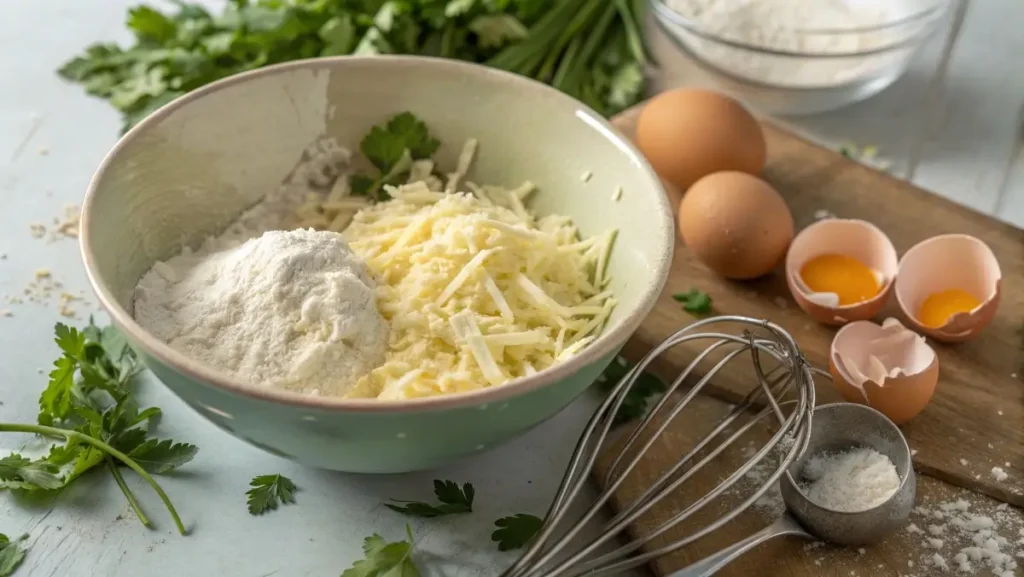
Core Ingredients in Classic Potato Pancakes
Traditional potato pancakes are built from simple, affordable ingredients. Freshly grated potatoes are the star, typically using starchy varieties like Russets for their high starch content, which helps bind the pancakes together without excess flour. Alongside the potatoes, grated onion adds a savory depth, while eggs provide structure and flour or matzo meal adds body. Salt and pepper are essential, but some cooks also mix in herbs like parsley or dill for extra flavor. The oil used for frying — often vegetable, canola, or sunflower — plays a big role in achieving that crisp, golden exterior. These basic ingredients form a flexible foundation that can be adapted to suit different cuisines and preferences.
Step-by-Step Cooking Method
Start by peeling and grating the potatoes, then squeeze out as much moisture as possible using a clean kitchen towel. This step is crucial for crispiness, as excess water will make the pancakes soggy. In a large bowl, combine the grated potatoes with finely grated onion, eggs, flour, salt, and pepper, mixing until evenly coated.
Heat a generous layer of oil in a skillet over medium-high heat until shimmering. Drop spoonfuls of the mixture into the pan, flattening them slightly with a spatula. Fry until golden brown on one side, then flip and cook the other side to match. Drain the pancakes on paper towels before serving immediately while hot and crisp. This traditional approach yields a hearty, flavorful result that’s perfect for breakfast, lunch, or dinner.
For a twist on the classic, don’t miss Funeral Potatoes Recipe which share the same crisp-shredded potato appeal but with a looser, breakfast-style form.
Using Potato Flour in Potato Pancakes
Can I Use Potato Flour to Make Pancakes?
Potato flour can absolutely be used in pancakes, but it behaves very differently from shredded potatoes or all-purpose flour. Made by grinding whole dehydrated potatoes into a fine powder, potato flour has a distinct earthy flavor and a heavier texture. When used alone, it can make pancakes dense and slightly chewy, so it’s best combined with other flours. For potato pancakes, mixing potato flour with all-purpose flour or a gluten-free blend can give you the flavor of potatoes while maintaining a lighter texture. Keep in mind that potato flour absorbs more moisture than regular flour, so you’ll need to adjust the liquid content in your batter to avoid it becoming too thick.
Adjusting Ratios for Best Texture and Flavor
For best results, replace about one-third of the total flour in your potato pancake recipe with potato flour. This ratio preserves the crispiness while adding a deeper potato flavor. If you want to skip fresh potatoes entirely, you can combine potato flour with instant potato flakes for a similar shredded-potato texture.
You’ll also need to watch your cooking temperature — potato flour can brown faster than wheat flour, so frying at a slightly lower heat helps prevent burnt edges before the center is cooked through. Seasoning is equally important; potato flour has a strong natural flavor, so balancing it with onions, herbs, and spices ensures the final dish isn’t bland. Discover great ideas like Paula Deen Sweet Potato Casserole that use potato-based ingredients in creative, flavorful ways for a whole new spin on this classic dish.
Potato Pancakes vs. Latkes
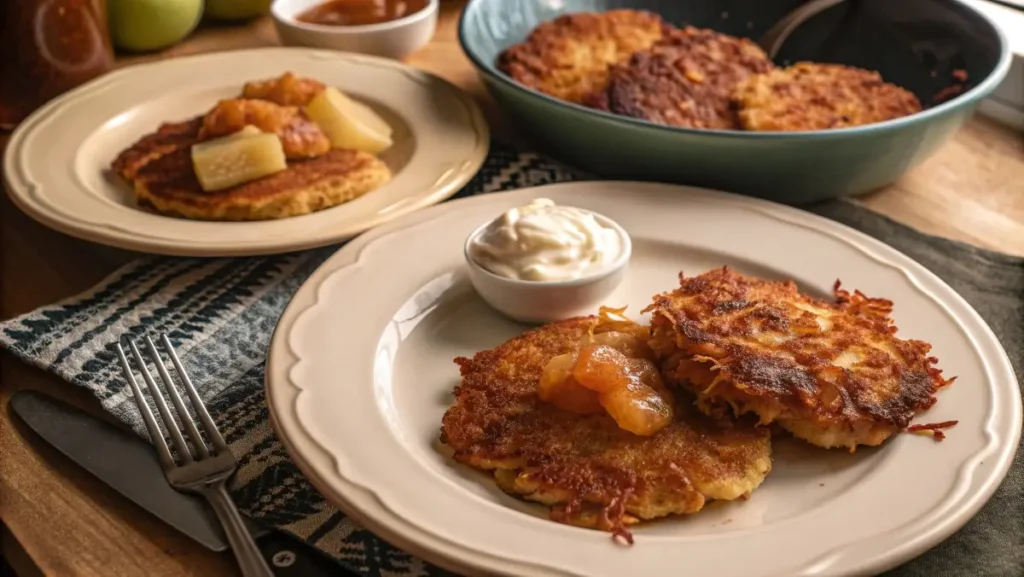
Is There a Difference Between Potato Pancakes and Latkes?
While potato pancakes and latkes share similar ingredients and preparation methods, subtle differences set them apart. Potato pancakes, in a general sense, can refer to any fried patty made from grated or mashed potatoes, often seasoned and bound with eggs and flour. Latkes, on the other hand, are a specific type of potato pancake rooted in Jewish tradition, especially associated with Hanukkah. Latkes are typically made with grated potatoes and onions, bound with eggs, and fried in oil — a symbolic nod to the miracle of the oil in the Hanukkah story. They tend to have a slightly coarser texture due to the way the potatoes are shredded and mixed, and are often served with applesauce or sour cream.
Cultural and Flavor Variations
In Germany, kartoffelpuffer are thin, crispy potato pancakes often enjoyed with applesauce or sprinkled with sugar. Polish placki ziemniaczane are similar but may be topped with savory sauces or meats. Swiss rösti lean toward a thicker, hash brown–like cake, made primarily from potatoes without flour or eggs.
Latkes stand apart for their holiday significance, symbolic ingredients, and slightly thicker bite. Each variation has its own seasoning traditions — from dill and parsley in Eastern Europe to nutmeg and onion in German kitchens. The beauty of the potato pancake family is its adaptability; no matter the culture, the goal remains the same — a golden, crispy treat with a tender center.
Don’t miss our Crockpot Loaded Steak and Potato Bake for a deep dive into this beloved holiday dish and how it compares to other styles.
Eggs in Potato Pancakes
Do You Put an Egg in Potato Pancakes?
Yes, most traditional potato pancake recipes include eggs, and for good reason. Eggs act as a binder, holding the shredded potatoes and other ingredients together during frying. Without them, the mixture can fall apart when flipped or lifted from the pan. The protein in eggs also helps create a firmer texture, while the fat in the yolk adds richness and flavor. Generally, one large egg is enough for every two to three cups of shredded potatoes, depending on the recipe. Some variations even separate the egg whites and whip them before folding into the batter for extra lightness, though this is more common in European styles.
Egg-Free Alternatives for Potato Pancakes
For those who can’t eat eggs or follow a vegan diet, there are several excellent egg substitutes for potato pancakes. Flaxseed meal mixed with water (commonly called a flax egg) can mimic the binding effect of real eggs. Chia seeds work in a similar way, forming a gel when mixed with liquid.
Another option is mashed sweet potato or butternut squash, which not only binds the ingredients but also adds a subtle sweetness and vibrant color. Store-bought egg replacers made from starches and plant proteins can also work well. When going egg-free, it’s important to handle the pancakes carefully during cooking, as they may be more delicate.
Looking for inspiration? Try Slow Cooker Candied Sweet Potatoes which use plant-based binders for a satisfying, crisp result without any eggs.
Other Names for Potato Pancakes
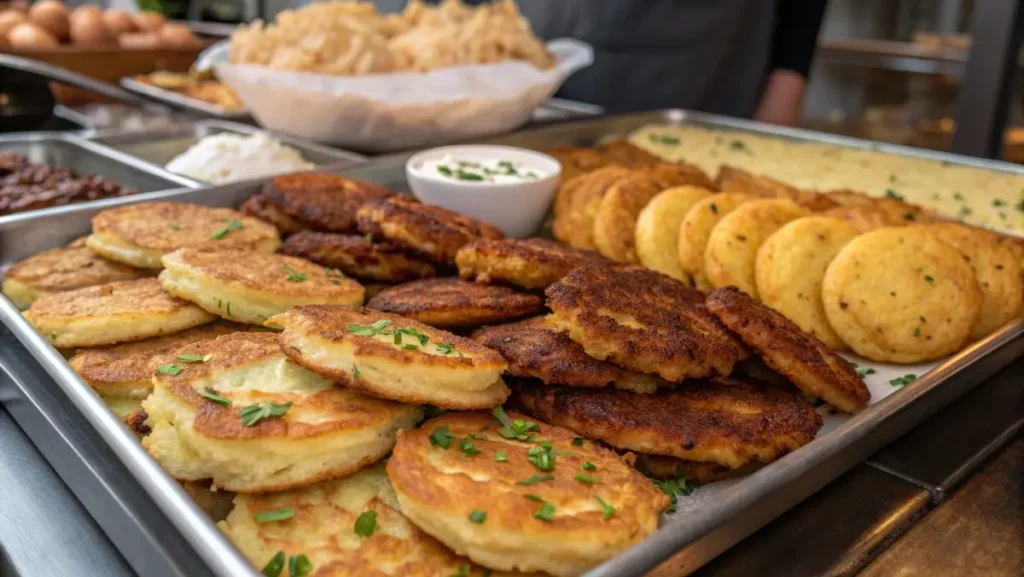
What’s Another Name for a Potato Pancake?
Potato pancakes go by many names depending on where you are in the world. In Germany, they’re called Kartoffelpuffer or Reibekuchen. In Poland, they’re known as Placki Ziemniaczane. In Jewish cuisine, especially during Hanukkah, they’re called Latkes. In Switzerland, a thicker, more hash-brown-like version is known as Rösti. Each name reflects not just language differences but also slight variations in preparation, texture, and serving traditions.
Regional Interpretations and Serving Styles
German Kartoffelpuffer are usually thin, crispy, and served with applesauce or sugar for a sweet-savory contrast. Polish Placki Ziemniaczane can be topped with sour cream, mushroom sauce, or even goulash for a hearty meal. Swiss Rösti focuses almost entirely on potatoes, often omitting flour and eggs, making it more like a large potato cake than a pancake.
In Belarus, Draniki are similar to Polish pancakes but typically fried in more oil for extra crunch. Even within the United States, variations exist — some Southern-style potato pancakes are made with leftover mashed potatoes, producing a softer, denser patty. This global variety showcases how the humble potato transforms into a cultural staple across borders.
For a taste of one regional classic, check out Baby Dutch Yellow Potatoes that capture the authentic flavor and texture of the German Kartoffelpuffer.
Conclusion
Potato pancake mix offers a quick and convenient way to enjoy a dish that’s beloved around the world, from crispy German Kartoffelpuffer to hearty Polish Placki Ziemniaczane and holiday-perfect Jewish latkes. Whether you stick to the mix, start from scratch, or experiment with potato flour, the key lies in balancing crispiness with flavor, adjusting moisture, and seasoning well. Eggs (or egg-free binders) help hold everything together, while frying in hot oil ensures that coveted golden crust. And with endless variations, toppings, and cultural twists, potato pancakes can fit any occasion — breakfast, dinner, or celebration.
For more inspiration, don’t miss our Gluten Free Side Dishes that captures the best balance of tradition and convenience.
FAQs
Can you make potato pancakes with pancake mix?
Yes, you can adapt regular pancake mix to make potato pancakes by reducing sugar, adding shredded potatoes, and incorporating savory seasonings. Adjust the liquid to avoid a runny batter and fry in oil for crisp edges.
How are potato pancakes made?
They’re traditionally made by grating potatoes and onions, mixing them with eggs, flour, salt, and pepper, then frying in hot oil until golden and crispy. Removing excess moisture from the potatoes is key to a perfect texture.
Can I use potato flour to make pancakes?
Yes, potato flour adds a rich potato flavor, but it should be mixed with other flours for the best texture. It absorbs more moisture than wheat flour, so adjust liquids accordingly and cook at a slightly lower heat to prevent burning.
Is there a difference between potato pancakes and latkes?
Yes. Latkes are a specific type of potato pancake tied to Jewish tradition, usually coarser in texture and served during Hanukkah with toppings like applesauce or sour cream, while potato pancakes can be from various cultures with different textures and seasonings.
Do you put an egg in potato pancakes?
Yes, most recipes use eggs as a binder to hold the potatoes and other ingredients together. Egg-free options include flax eggs, chia seeds, or mashed vegetables.
What’s another name for a potato pancake?
Depending on the region, potato pancakes are called Kartoffelpuffer, Placki Ziemniaczane, Latkes, Rösti, or Draniki, each with unique cultural variations.
